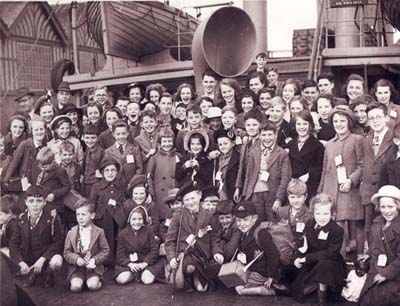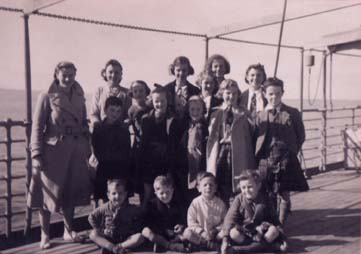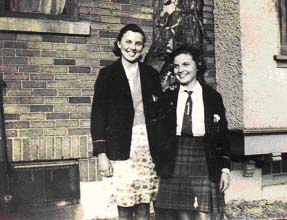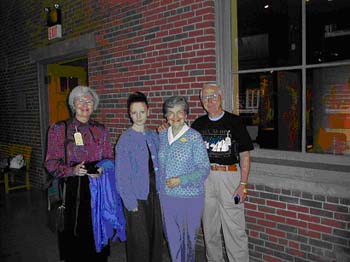Sobey Wall of Honour
Column
51
Row
11
Anne MacKinnon Jeffrey
My sister, Catherine MacKinnon Read, and I left Gourock, Scotland on the S.S. Bayano on August 15th, 1940. As we sailed down the Clyde, we all stood at the rail on the upper deck, watching the land of our birth fade from sight, and wondered when we would see it again. At sea, we joined a large convoy of many different kinds of ships. To me, this was the beginning of a real adventure.
The S.S. Bayano, a banana boat, had been condemned before the war, but was pressed into service to transport evacuee children to safety in Canada. Captain Bingham-Wallis was a kind, caring, jolly man as was the crew on this small ship of 99 souls.
Separated from my sister, I was put in charge of two little girls in a 3 berth cabin in the hold. My sister was in another cabin with an older girl in charge. We had hoped to be on the promenade deck, but location did not make any difference as far as sea sickness was concerned. Sea sickness was a major problem. The captain had told us eat lots of food, especially a large bowl of porridge for breakfast, to put a lining on your stomachs, and you won't be seasick. I did and was fine for the 14 day trip!
Lifeboat drills and life belts were very important. We even slept in them. Later, I would understand why. German U-boats were sinking all shipping, including children ships. One in our convoy was torpedoed, and all lives lost, as no one stops to pick up survivors in wartime. Ours was the last convoy to include children.
The crew was extremely kind to us, cooking excellent meals, showing films, playing games, leading singsongs all to keep our minds off the ever present threat of being lost at sea. Every day we were up on deck for lifeboat drills. The children were divided into groups of about 12, with one adult in charge. These women were substitute mothers, mentors and friends, unsung heroines of the evacuee program.
Some of us, the healthy ones, walked the promenade deck several times a day, and stood at the rail watching the ships surrounding us on an endless ocean. Sometimes, the ship were just tiny dots on the horizon. But they always make us feel safe. Something which amazed us was the birds flying around the ship and never seeming to land.
One thing I did not enjoy was taking a bath lathering up with a small dish of normal water, and showering off with salt water, pumped from the Atlantic Ocean. Interestingly, this salt water did not harm the skin.
All of this time I looked on as a great adventure and was always optimistic and happy.
The day before we docked, the crew held a concert, and we were all given souvenirs of the S.S. Bayano, followed by the usual cake and ice-cream.
Our evacuee ship was the only one which did not sail into Halifax harbour and Pier 21, due to the presence of German U boats. Instead, we sailed up the St. Lawrence River, lining the deck to watch the scenery, and awed at the vastness of the country Canada, which was to be my home for 4 years.
We docked briefly at Quebec City, then sailed on to Montreal, where we disembarked. We were served a grand tea and given treats to eat the journey before boarding the train for Toronto. We all stayed at the University of Toronto residences- Fisher House and Hart House. Every day there was some kind of medical exam and lots of shots, and one day when our heads were examined for nits! About 2 weeks later, my sister and I trained for Ottawa, Ontario. After spending a few days in 3 foster homes, we were finally driven to the home of our host family.
In August, 1944, I returned to Scotland (I was 18), and sailed home on, yes, the S.S. Bayano! There was a new captain. Captain Bingham-Wallis has been cashiered out of the Royal Navy, because his ship had stopped to pick up survivors at sea. One of the young officers on board was his son, Geoffrey.
The one thing which I will always remember is the great kindness shown to us in Scotland, on board ship, and in Canada.
The whole experience changed our lives forever.
After the war, my sister and I returned to Canada, where we proudly became Canadian citizens. We married in 1949 and 1951, and still live here with out husbands, children and grandchildren.



